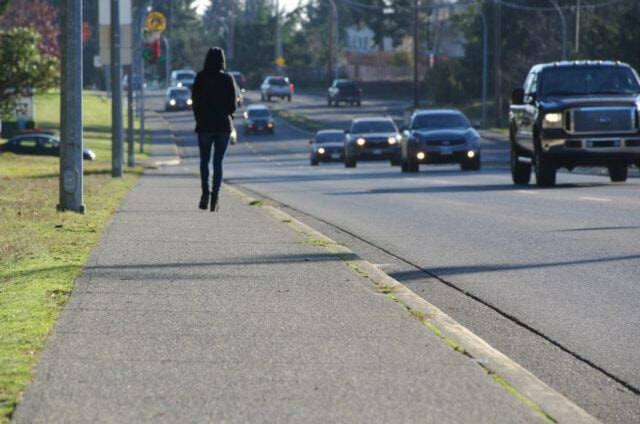BY POOJA CHOUDHARY
Sidewalks act as veins within the city fabric carrying people from one end of the city to another. So why there are still neighbourhoods in Nanaimo that do not have safe sidewalks or sidewalks at all?
With active transportation planning recently examined as part of ReImagine Nanaimo, there has been quite the active transportation buzz in the community and I believe safe sidewalks are a good place to start. The existing transportation master plan has included a proposal to double the number of walking trips, but do we think this can happen without providing safe sidewalks in neighbourhoods?
Sidewalks are vital in making a city walkable and connected. In the case of Nanaimo, there are problematic sidewalks causing issues. News items and the city’s own reports have exposed safety concerns such as speeding drivers, accidents, inaccessibility due to troublesome intersections, and sidewalk issues in many of the neighbourhoods. They also highlighted neighbourhoods with concerns due to the lack of adequate sidewalks. Streets like Dufferin Crescent, the intersection of Bruce and Albion, the areas in and around Port Place mall and Chapel Street have known safety issues. Addressing gaps in connectivity or inadequate separation and protection of pedestrians are critical for making Nanaimo safe and increasing pedestrian trips.
Do you think it is fair to the residents who choose to walk to not have some kind of sidewalks? Should we not give them safe sidewalks that can make their commute more hassle-free? According to Nanaimo’s transportation master plan, 8.5 per cent of residents travel by foot. The city of Nanaimo is making efforts to accommodate cars on the street, because they make the majority of the trips, but this number cannot be an excuse to put walkers through distress.
So, how can we make sidewalks safe? We could design public spaces by incorporating safe, pedestrian-oriented intersections while enhancing lighting along with them. We could provide buffers between the pedestrians and the vehicles such as trees and boulevards and between pedestrians and cyclists. Also, sidewalk improvements such as widening, repairing cracks, removing barriers and providing amenities like benches and garbage cans can be effective specifically in the areas with high pedestrian usage. Moreover, lowering vehicle speed especially on local roads can promote a safe environment.
Sidewalks can be interrelated with health and mental benefits for children and adults. Safe sidewalks mean more people can feel comfortable walking around the city and letting their children play outside, so communities can become healthier.
From the evidence, it is clear that in the long list of residents’ wants and needs for the City of Nanaimo, sidewalks seem to be pretty high on the list. Therefore, the local government must work in co-operation with other levels of government to secure funding to upgrade and create sidewalks much needed by the city. It is equally important that Nanaimo initiates strategies that prioritize active transportation, car sharing and bike sharing to make the city more walkable, connected and attractive countering the ‘cars-centric’ approach. This will encourage people to enjoy the vibrancy of Nanaimo even more and help the city achieve its goal of becoming more accessible in the long run.
Pooja Choudhary is a master of community planning student at Vancouver Island University.
GUEST COLUMN: Rethink retail spaces in an era of online shopping
editor@nanaimobulletin.com
Like us on Facebook and follow us on Twitter
